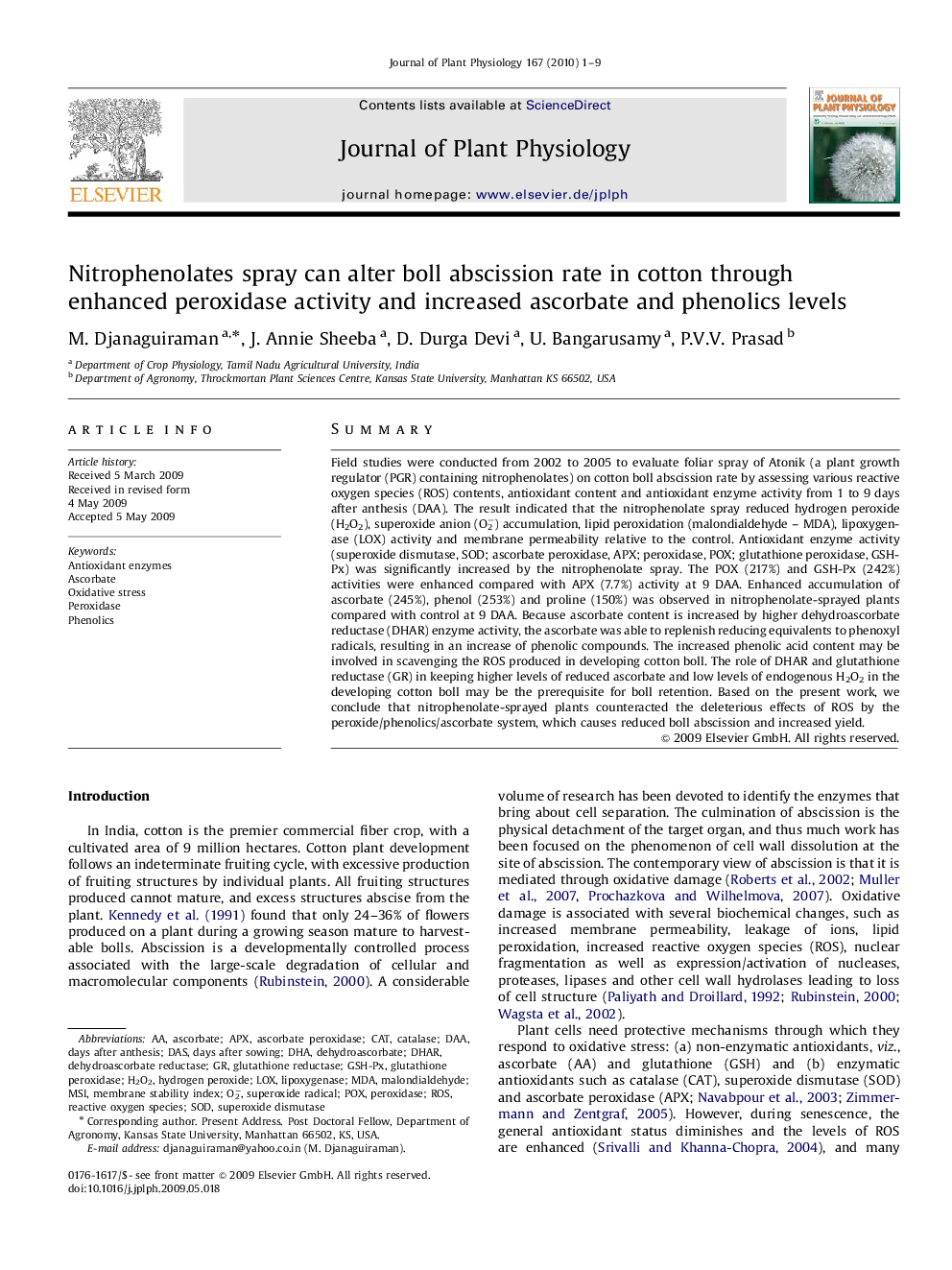| کد مقاله | کد نشریه | سال انتشار | مقاله انگلیسی | نسخه تمام متن |
|---|---|---|---|---|
| 2056893 | 1075849 | 2010 | 9 صفحه PDF | دانلود رایگان |

SummaryField studies were conducted from 2002 to 2005 to evaluate foliar spray of Atonik (a plant growth regulator (PGR) containing nitrophenolates) on cotton boll abscission rate by assessing various reactive oxygen species (ROS) contents, antioxidant content and antioxidant enzyme activity from 1 to 9 days after anthesis (DAA). The result indicated that the nitrophenolate spray reduced hydrogen peroxide (H2O2), superoxide anion (O2−) accumulation, lipid peroxidation (malondialdehyde – MDA), lipoxygenase (LOX) activity and membrane permeability relative to the control. Antioxidant enzyme activity (superoxide dismutase, SOD; ascorbate peroxidase, APX; peroxidase, POX; glutathione peroxidase, GSH-Px) was significantly increased by the nitrophenolate spray. The POX (217%) and GSH-Px (242%) activities were enhanced compared with APX (7.7%) activity at 9 DAA. Enhanced accumulation of ascorbate (245%), phenol (253%) and proline (150%) was observed in nitrophenolate-sprayed plants compared with control at 9 DAA. Because ascorbate content is increased by higher dehydroascorbate reductase (DHAR) enzyme activity, the ascorbate was able to replenish reducing equivalents to phenoxyl radicals, resulting in an increase of phenolic compounds. The increased phenolic acid content may be involved in scavenging the ROS produced in developing cotton boll. The role of DHAR and glutathione reductase (GR) in keeping higher levels of reduced ascorbate and low levels of endogenous H2O2 in the developing cotton boll may be the prerequisite for boll retention. Based on the present work, we conclude that nitrophenolate-sprayed plants counteracted the deleterious effects of ROS by the peroxide/phenolics/ascorbate system, which causes reduced boll abscission and increased yield.
Journal: Journal of Plant Physiology - Volume 167, Issue 1, 1 January 2010, Pages 1–9